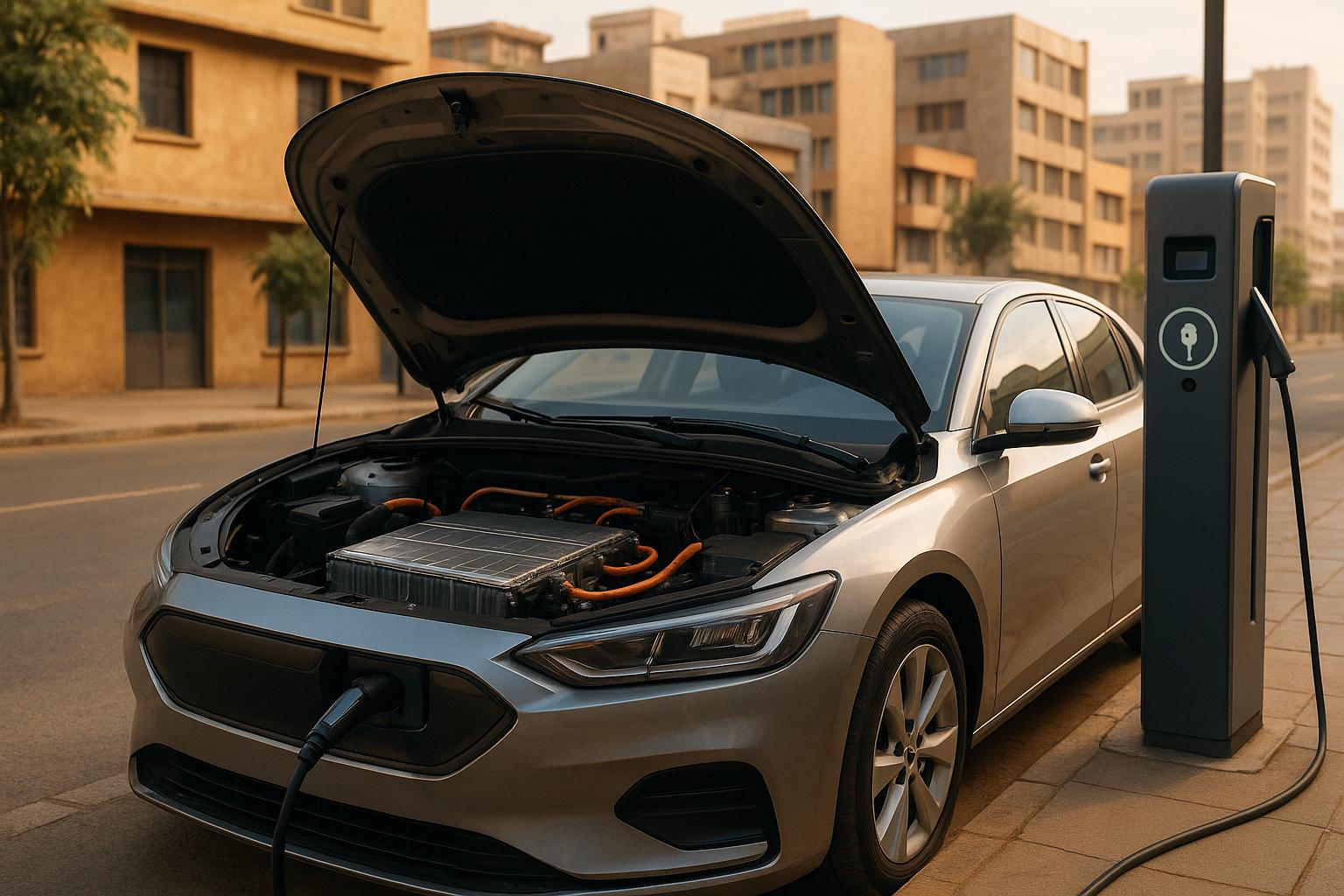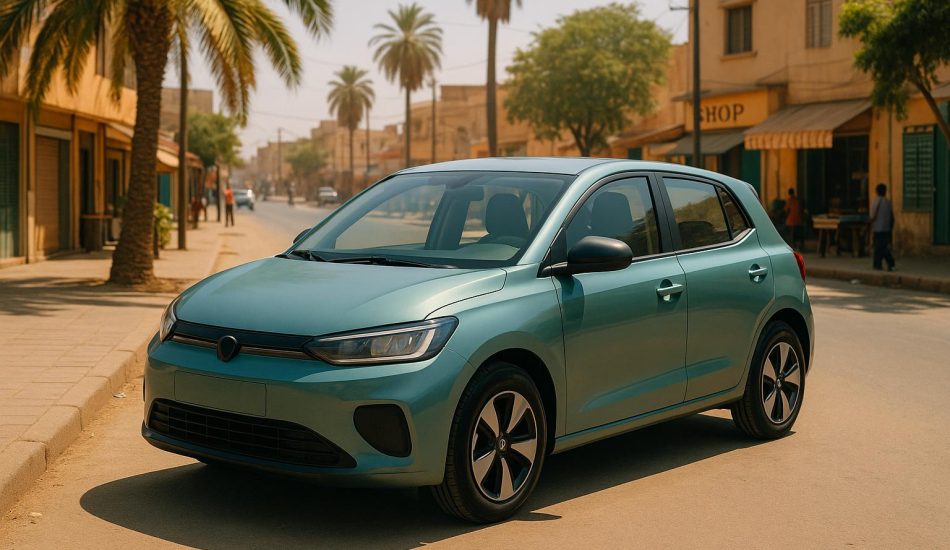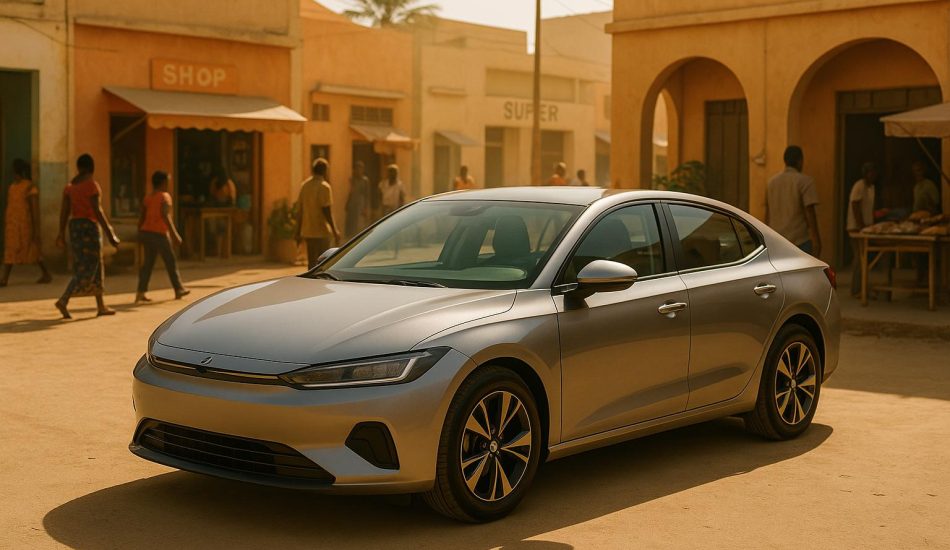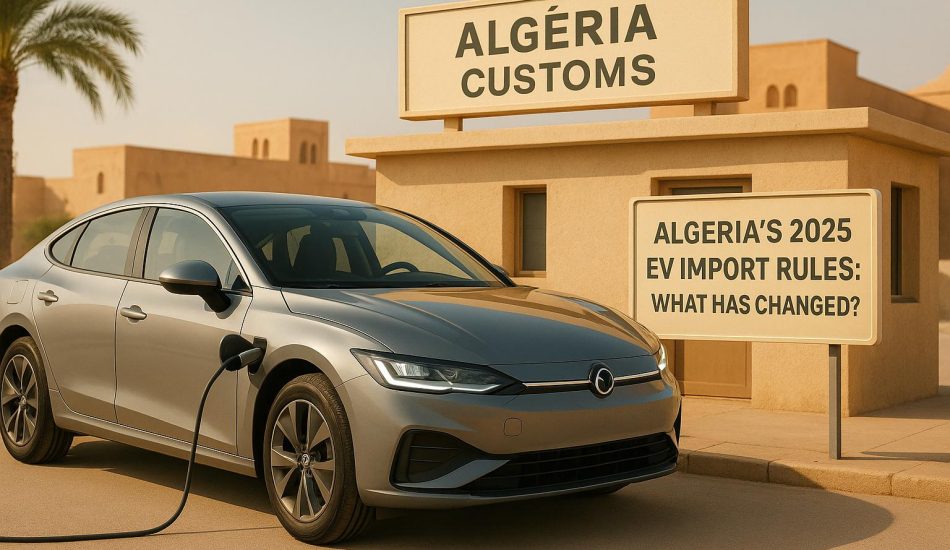
Replacing an EV battery in Africa can cost between $5,000 and $20,000, depending on factors like battery type, supply chains, and local conditions. Here’s what you need to know:
- Battery Lifespan: 8–12 years in hot climates; 12–15 years in moderate ones.
- Key Cost Drivers:
- Battery Type: NMC (expensive), LFP (affordable), NCA (premium).
- Supply Chain: High import fees due to China’s dominance in battery production.
- Local Conditions: Hot weather accelerates wear and tear.
- Future Outlook: By 2030, battery costs could drop to $50–$64 per kWh thanks to improved technologies and local manufacturing.
Pro Tip: Extend battery life by charging between 20–80%, parking in shade, and maintaining the cooling system.
Read on to learn more about reducing costs and Africa’s growing role in EV battery production.
The Reality of Driving an Electric Vehicle in Nigeria: Prices …
What Affects Battery Replacement Costs
The cost of replacing EV batteries in Africa depends on several variables. Factors like supply chains, battery types, and local conditions all play a role in determining expenses. Here’s a closer look at the main influences on these costs.
Supply Chain and Import Fees
China dominates the global lithium-ion battery market, handling 80% of mineral refining, 77% of cell production, and 60% of component manufacturing. This dominance leads to high shipping fees and import duties, which can significantly raise costs.
Take Zambia, for example: Eurasia Resources Group (ERG) Africa had to halt operations at its Chambishi Metals refinery twice – once in early 2019 and again in January 2020 – due to a 5% duty on feedstock imports and subsequent shortages.
Types of EV Batteries
The type of battery in an EV plays a big role in replacement costs. Here’s a breakdown:
| Battery Type | Key Characteristics | Cost Impact |
|---|---|---|
| NMC (Nickel Manganese Cobalt) | Commonly used | Higher cost due to cobalt |
| LFP (Lithium Iron Phosphate) | Cobalt-free | More affordable, gaining popularity |
| NCA (Nickel Cobalt Aluminum) | High energy density | Comes at a premium |
To cut production costs, manufacturers like Volkswagen, Tesla, and BYD are working on cobalt-free batteries. Currently, battery cells make up 60–80% of the total battery pack cost.
Beyond supply chains and battery types, local environmental conditions also play a critical role in battery longevity.
Weather and Daily Use
Africa’s hot climate can speed up battery wear and tear. To extend battery life, consider these tips:
- Ensure the cooling system is functioning properly.
- Avoid letting the state of charge (SOC) drop below 20%.
- Schedule regular maintenance with certified technicians.
- Park in shaded areas whenever possible.
High temperatures combined with frequent use can reduce a battery’s health. If the battery’s State of Health (SOH) dips below 70–80%, you might need a replacement sooner than expected.
Current Battery Costs by EV Model
Luxury EV Battery Costs
Replacing batteries in luxury EVs can be quite expensive. This is due to factors like larger battery capacities, advanced features, and unique designs specific to high-end models. For instance, replacing the battery in a Tesla Model 3 is estimated to cost anywhere from $12,000 to $20,000. These costs can fluctuate depending on factors such as import fees, labor charges, and the availability of parts.
Let’s take a look at how battery costs for budget EVs stack up.
sbb-itb-99e19e3
How to Reduce Battery Costs
Extend Battery Life
Taking care of your EV battery can save you from expensive replacements. Managing temperature is especially important, given the varying climate conditions found in regions like Africa.
Here are some tips to keep your battery in good shape:
- Charge between 20–80% to avoid overcharging or deep discharging.
- Let the battery cool after driving before plugging it in.
- Park in shaded areas or a garage to protect the battery from extreme heat.
- Precondition the battery while charging to optimize its temperature.
- Keep tires inflated properly to reduce unnecessary strain on the battery.
- Drive smoothly, avoiding sudden acceleration or hard braking.
Warranty and Service Plans
Beyond regular maintenance, warranty plans can help cut down on battery-related expenses. Many EV manufacturers provide coverage for up to 8 years or 100,000 miles. When choosing a warranty, focus on plans that cover:
- Battery pack
- Motor
- Charging port
- Inverter
Considering that replacing a battery pack can cost between $5,000 and $20,000, a good warranty can lead to considerable savings. Some plans even include perks like roadside assistance and rental car coverage during repairs.
Pairing routine care, warranty coverage, and timely software updates can help you avoid costly issues down the road.
Battery Cost Trends and Predictions
2030 Cost Outlook
Goldman Sachs estimates that by 2030, battery pack prices will fall to $64 per kWh, making EV battery replacements more accessible for owners in Africa. Similarly, Daan Walter from RMI predicts that EV battery cell costs could hit $35 per kWh by then, bringing pack prices below $50 per kWh.
Several factors are driving these price drops:
- Development of more affordable battery chemistries like LFP (lithium-iron-phosphate)
- Improved energy density in next-generation batteries
- Better recycling and reuse of battery materials
- Falling prices of critical metals like lithium and cobalt
The second-life market for EV batteries also plays a role. By repurposing used batteries for energy storage, replacement costs could be reduced by $10 to $20 per kWh. Globally, as costs decline, Africa’s budding local production is beginning to reshape the market further.
African Battery Production
In Africa, local production efforts are complementing global cost reductions. One standout example is Thakadu Battery Minerals‘ $20 million nickel sulfate refinery, launched in South Africa in March 2021. This facility processes up to 30,000 tonnes of nickel sulfate annually using feedstock from Sibanye-Stillwater.
Market projections highlight promising growth:
| Metric | Projection |
|---|---|
| Battery Demand by 2030 | 83 GWh |
| Annual Growth Rate | 22% |
| Mini-grid Market Share | 40% |
The African Continental Free Trade Area (AfCFTA) is expected to reduce import duties, simplify cross-border trade, and encourage regional manufacturing partnerships. These changes could lower battery costs by improving access to raw materials.
"There is a window of opportunity until 2030 for African firms to prepare themselves before the sale EVs takes off. The beneficiation of minerals to battery-grade metals is an opportunity that firms can seize early. There is currently a strong desire by global firms to reduce dependence on China for LIB metals."
However, local production faces several hurdles:
- Workforce skill shortages
- Limited financing options
- Infrastructure limitations
- Delays in implementing industrial policies
If these challenges are addressed, Africa could transition from being a supplier of raw materials to becoming a key player in the global battery market. This shift could make replacement batteries more affordable and accessible across the continent.
Conclusion
As Africa’s electric vehicle (EV) market grows, understanding battery replacement costs is crucial for making informed ownership decisions. With demand on the rise and the market expanding quickly, the situation is constantly changing.
Several key factors will influence future costs across the continent. The African Continental Free Trade Area (AfCFTA) is helping to strengthen regional supply chains, while local production efforts are beginning to shift market dynamics.
For EV owners, taking care of their batteries – like keeping charge levels in the right range and ensuring the cooling system works properly – can help extend battery life and lower long-term expenses. The availability of EV infrastructure and support networks also varies widely by region, with countries such as Seychelles, Morocco, and South Africa leading the way in EV readiness.
"Comprehensive data and insights are crucial to empower investors with market clarity, enable companies to scale, and equip policymakers to tailor and champion EV agendas effectively." – Energy for Growth Hub
As battery technology improves and local manufacturing capabilities grow, replacement costs are expected to become more affordable. These developments could make EV ownership more accessible across Africa.
FAQs
How does the type of EV battery impact replacement costs in Africa?
The type of battery in an electric vehicle (EV) plays a significant role in determining replacement costs. Most EVs use either lithium-ion or nickel-metal hydride batteries, with lithium-ion being more common due to their higher efficiency and longer lifespan. However, they are also typically more expensive to replace.
Factors like battery size, capacity, and manufacturer also influence costs. For instance, larger batteries with higher energy capacities tend to cost more. Additionally, the availability of specific battery types in Africa can affect pricing due to import fees, taxes, and supply chain challenges. To minimize costs, proper maintenance and adopting good charging practices can help extend battery life, reducing the need for early replacement.
How can EV owners in Africa make their vehicle’s battery last longer?
To maximize the lifespan of your EV battery, consider the following tips:
- Drive efficiently: Avoid aggressive acceleration and high speeds, as these can strain the battery.
- Charge wisely: Keep your battery’s charge level between 20% and 80% whenever possible. Avoid letting it drain completely or charging it to 100% frequently.
- Protect from extreme temperatures: Extreme heat or cold can degrade battery performance over time. Park in shaded or temperature-controlled areas when possible.
- Limit fast charging: While convenient, frequent use of rapid charging stations can accelerate battery wear.
By following these practices, EV owners can help ensure their battery remains reliable and efficient for years to come.
How could local EV battery production in Africa affect replacement costs in the future?
Local production of EV batteries in Africa has the potential to significantly lower replacement costs in the future. By leveraging the continent’s abundant raw materials and establishing facilities for refining, manufacturing, and assembly, production costs could decrease, which may translate to more affordable batteries for consumers.
With the right economic policies and incentives, both local and international companies could invest in African operations, creating a more efficient supply chain and reducing reliance on imports. This could also promote job creation and technological advancements, further driving down costs over time. Ultimately, local production could make EV ownership more accessible and sustainable for African drivers.




